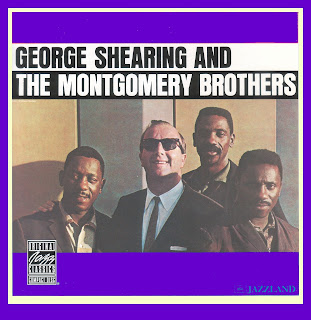© -Steven Cerra , copyright protected; all rights reserved.
One of the aspects of Jazz that I have always been intrigued with is its many styles.
If, as Louis Armstrong states – “Jazz is who you are” – then it stands to reason that different people will create Jazz that sounds singular and distinct.
Put another way: “We are all different with regard to those things we have in common.” – Aristotle.
The Modern Jazz Quartet’s pardon-me-while-I-swing approach to Jazz is quite a contrast to the assertive, loud, take-no-prisoners hard bop of Art Blakey and the Jazz Messengers, but equally as enjoyable.
Bill Evans played piano in an introspective way while Oscar Peterson played it aggressively; Bobby Hackett played trumpet in a lyrically romantic manner while Lee Morgan seemed to attack the instrument and breathe fire through its bell; Tal Farlow never left a note un-played during his finger-poppin’ displays on guitar while Jim Hall might play less than a dozen notes on guitar in an entire chorus.
And yet, depending on my mood, the music of Bill, OP, Bobby, Lee, Tal and Jim all find their way into my disc changer at one time or another.
Musicians who play a certain way gravitate toward one another: pianist Alan Broadbent and alto saxophonist Gary Foster are pulled together by a deep and abiding interest in Lennie Tristano’s music; Warne Marsh and Pete Christlieb were naturals in a dueling tenor saxophone setting carrying on the tradition set by Wardell Gray and Dexter Gordon, as were Gene Ammons and Sonny Stitt and Johnny Griffin and Eddie “Lockjaw” Davis; a mutual love of the songs from the Great American Songbook were no doubt responsible for the pairings of cornetist Ruby Braff and pianist Roger Kellaway, or the many recordings that Roger made with bassist Red Mitchell or the duo albums that bassist Ray Brown and guitarist Herb Ellis produced together over the years.
Jazz is very egalitarian and ecumenical; it brings people together, especially those who have a stylistic affinity for certain approaches to the music.
Such was the case when The Montgomery Brothers – guitarist Wes, vibraphonist Buddy and bassist Monk – got together with pianist George Shearing.
Although they never worked as a formal group, The Montgomery Brothers and George did jam together on a few occasions and thankfully produced one album of music for Jazzland Records that features a rich blend of sound between piano, guitar and vibes all firmly supported by Monk Montgomery’s formidable bass work and Walter Perkins’ solid drumming.
The album, which is entitled George Shearing and The Montgomery Brothers, features a number of standards, some original compositions written expressly for the recording date and Latin Jazz tracks on which percussionists Armando Peraza and and Ricardo Chimelis were added. It has been re-issued on CD and is available as OJCCD-040-2.
Here is a portion of producer Orrin Keepnews’ insert notes which touch on the smooth-flowing togetherness that characterizes the music of George Shearing and The Montgomery Brothers and our opening theme of how Jazz musicians seem to find their musical soul mates.
Following Orrin’s notes is a video tribute that features the crackerjack graphics developed by the folks at CerraJazz LTD with an audio track comprised of The Montgomery Brothers, George and Walter performing George Shearing’s original composition – And Then I Wrote.
Jazz at its beautiful, best.
“One of the most fascinating aspects of jazz is the almost infinite number of rewarding combinations of men and styles that are possible. And particularly since some listeners, and critics, tend to get hard-headed about setting up rigidly separate categories and "schools," it is always especially intriguing when chance and circumstance bring together supposedly divergent artists like these. Night club audiences in California, and then in New York, were the first to get unscheduled glimpses of the present amalgamation late in 1960 when Shearing discovered for himself the magnetic appeal of the Montgomery’s and began sitting in with them whenever the opportunity presented itself. He found it particularly stimulating and challenging to work with the remarkable guitarist Wes Montgomery — whose truly incredible efforts have been startling the jazz world ever since the issuance of his first Riverside album at the end of '59.
From their enjoyment of their informal encounters grew a mutual musical respect and affection that eventually and inevitably led to this album. Shearing, although in clubs he has continued to work primarily in a small-group framework, has in recent years done most of his recording with large brass-choir and lush-strings backgrounds. He made no secret of the fact that he was drawn to this date by the prospect of playing in a looser and more free jazz setting than he has been able to mix with for quite some time.
I was able to watch the mutual unity of feeling grow ever stronger during a series of informal rehearsals and get-togethers during the week preceding the recording, and then had the pleasure of seeing it come to a peak in the studio. There is of course nothing surprising about the fact that the three Montgomery Indianapolis
Therefore the big news lies in the way they adapt themselves to Shearing and he to them, to produce a joyously swinging — although unfortunately only quite temporary — team.”


No comments:
Post a Comment
Please leave your comments here. Thank you.